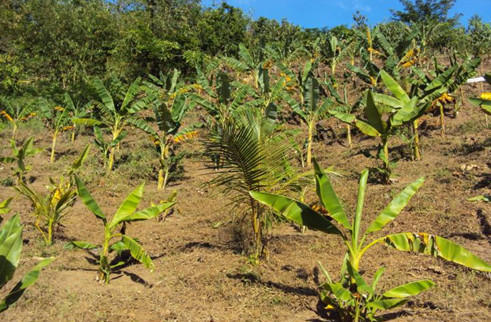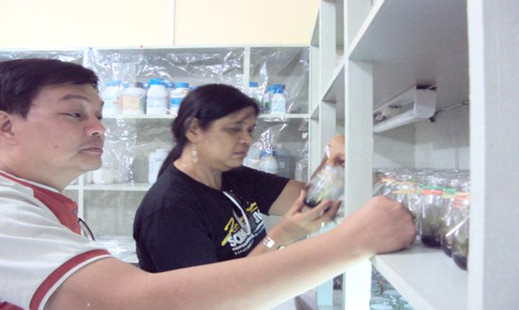The Crops Research Division (CRD) of PCAARRD recently conducted a field visit in Albay and Catanduanes to monitor the ongoing project on abaca titled “Rehabilitation of Abaca Plantation through Adoption of High Yielding and Virus Resistant Abaca Hybrids.”
Dr. Jocelyn E. Eusebio, CRD Director, led the monitoring team composed of Dr. Juanito T. Batalon, PCAARRD Industry Strategic S&T Plan Manager for Abaca, Dr. Teodora O. Dizon, Project Team Member from the University of the Philippines Los Baños (UPLB), and two other staff.
 Through the said project led by UPLB, the ABTV-resistant and high-yielding hybrids developed at the Institute of Plant Breeding-UPLB are planted in different areas in the country for agronomic and economic assessment. The provinces of Albay and Catanduanes are the identified research areas in the Bicol Region.
Through the said project led by UPLB, the ABTV-resistant and high-yielding hybrids developed at the Institute of Plant Breeding-UPLB are planted in different areas in the country for agronomic and economic assessment. The provinces of Albay and Catanduanes are the identified research areas in the Bicol Region.
Four varieties (Hybrid 2, Hybrid 4, Hybrid 7, and Tinawagang Pula) were planted in the project sites with four replications. The three IPB-developed hybrids are the experimental treatments while Tinawagang Pula, the commercially grown variety in the area, is the traditional check or control.
In a multilocation trial site at Catanduanes State University (CSU)-Panganiban Campus, the three IPB-hybrid varieties showed resistance to ABTV while the control was already heavily infected. Aside from ABTV, the control also showed symptoms of Bract Mosaic Disease infection.
Although not yet conclusive, the monitoring team noted that the hybrid varieties performed better than the control. The researchers from UPLB took leaf samples for further study.
 Aside from the multilocation site, Ms. Nena V. Santos, Project Component Leader from CSU, also showed the abaca plantlets in a nursery at CSU Main Campus in Virac. Currently, the nursery has abaca plantlets ready for transplanting for multilocation trial.
Aside from the multilocation site, Ms. Nena V. Santos, Project Component Leader from CSU, also showed the abaca plantlets in a nursery at CSU Main Campus in Virac. Currently, the nursery has abaca plantlets ready for transplanting for multilocation trial.
The team also visited the project site at the Bicol University College of Agriculture and Forestry (BUCAF)-Mauraro Campus. Forty seedlings per variety were planted in the site. The hybrids were observed to have more suckers per plant and were generally bigger than the control. It was also noted that there was no ABTV incidence recorded in the site. Dr. Marissa N. Estrella of BUCAF reported that the plants were able to recover and remained vigorous after typhoon Glenda hit the region.
The monitoring team also visited the tissue culture laboratory at BUCAF-Guinobatan Campus. Some cultures were reported to have been contaminated due to power interruption after typhoon Glenda. Dr. Estrella and her staff nonetheless assured the team that they would beef up their tissue culture activities to meet the project’s target output.
By 2016, it is expected that the results of the multilocation trials and tissue culture activities in Bicol will contribute in the national target of 2.5 million abaca plantlets.
